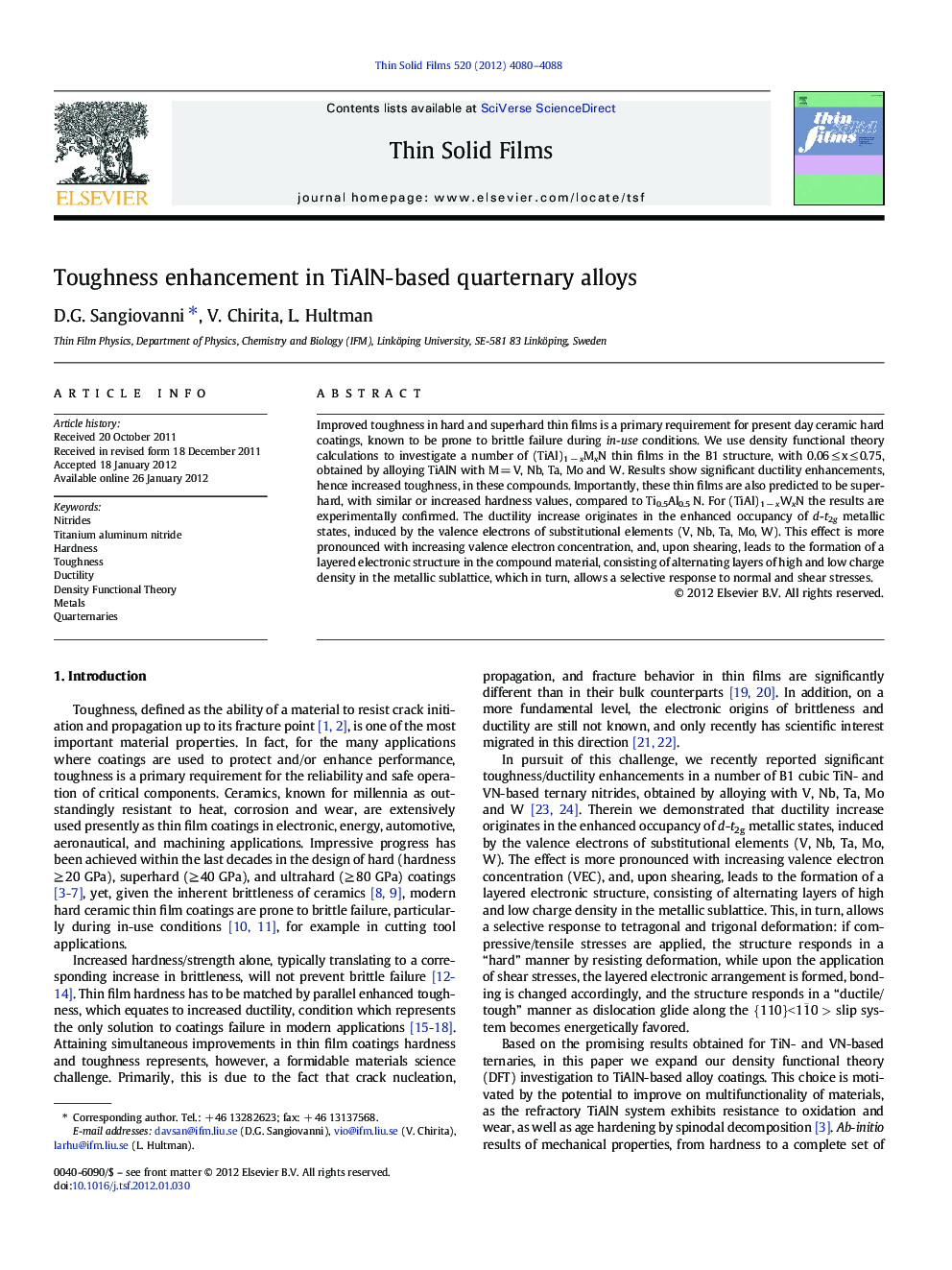| Article ID | Journal | Published Year | Pages | File Type |
|---|---|---|---|---|
| 1667258 | Thin Solid Films | 2012 | 9 Pages |
Improved toughness in hard and superhard thin films is a primary requirement for present day ceramic hard coatings, known to be prone to brittle failure during in-use conditions. We use density functional theory calculations to investigate a number of (TiAl)1 − xMxN thin films in the B1 structure, with 0.06 ≤ x ≤ 0.75, obtained by alloying TiAlN with M = V, Nb, Ta, Mo and W. Results show significant ductility enhancements, hence increased toughness, in these compounds. Importantly, these thin films are also predicted to be superhard, with similar or increased hardness values, compared to Ti0.5Al0.5 N. For (TiAl)1 − xWxN the results are experimentally confirmed. The ductility increase originates in the enhanced occupancy of d-t2g metallic states, induced by the valence electrons of substitutional elements (V, Nb, Ta, Mo, W). This effect is more pronounced with increasing valence electron concentration, and, upon shearing, leads to the formation of a layered electronic structure in the compound material, consisting of alternating layers of high and low charge density in the metallic sublattice, which in turn, allows a selective response to normal and shear stresses.
► DFT calculated mechanical properties of TiAlN-based quarternary alloys. ► (TiAl)1 − xMxN alloys with M = V, Nb, Ta, Mo and W for 0.06 ≤ x ≤ 0.75. ► Ductility enhancement induced by increased valence electron concentration (VEC). ► Alloys predicted to be superhard, with higher hardness than TiAlN. ► The hardness/ductility combination implies enhanced toughness in all alloys.
